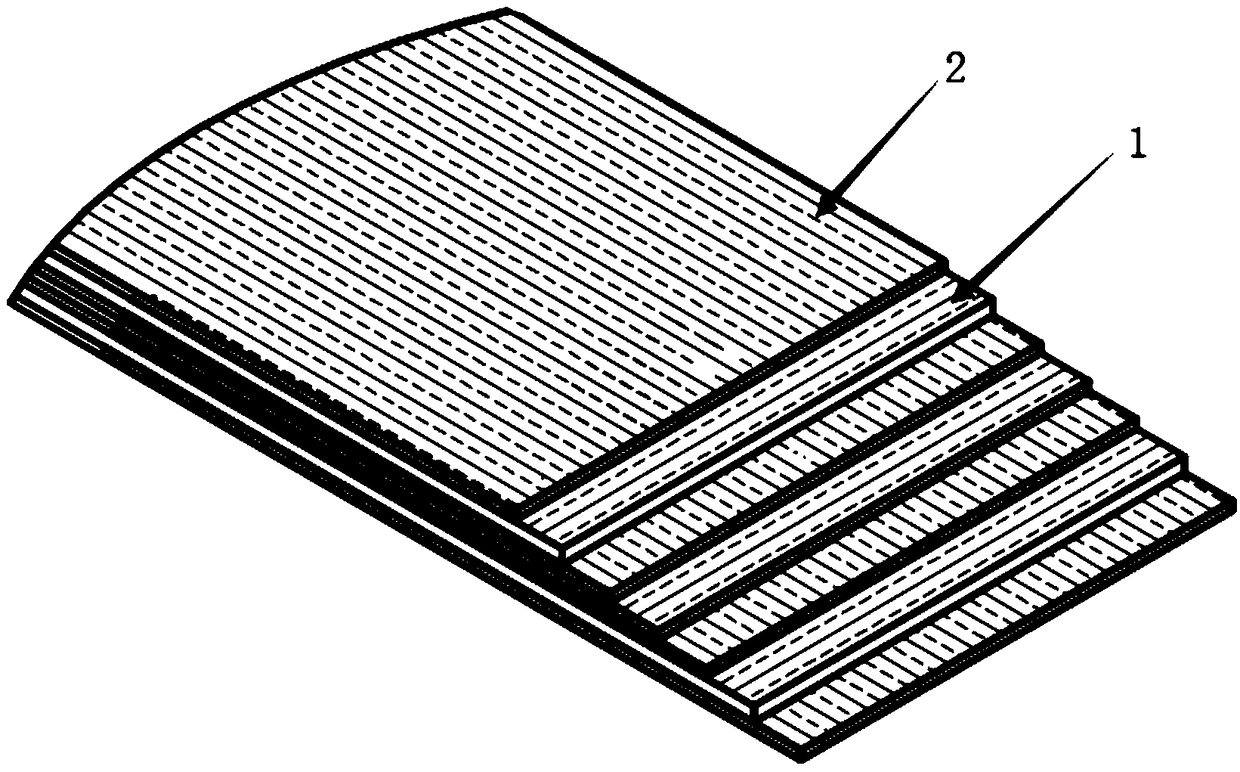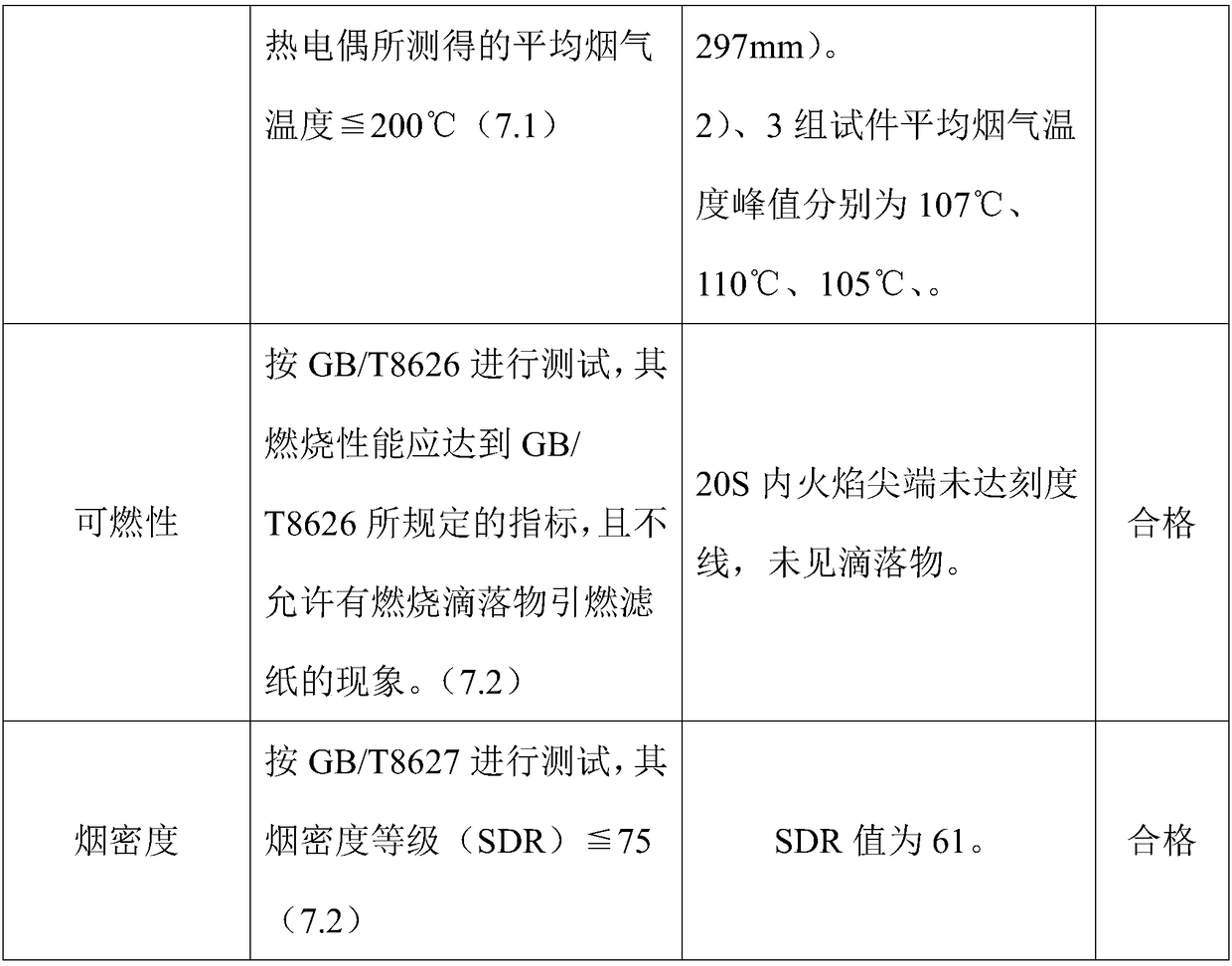Novel plant fiber flame retardant adhesive and preparation method thereof
A plant fiber, adhesive technology, applied in the direction of aldehyde/ketone condensation polymer adhesive, adhesive type, starch adhesive, etc., can solve the problem of poor fire resistance, difficult to achieve fire resistance, safety performance and decoration effect, impact and other issues, to achieve durable fire resistance, improve weather resistance and coloring effect, and enhance the effect of compression resistance
- Summary
- Abstract
- Description
- Claims
- Application Information
AI Technical Summary
Problems solved by technology
Method used
Image
Examples
Embodiment 1
[0021] A new flame-retardant adhesive for plant fibers, comprising the following components: 4g of trisodium phosphate, 50g of magnesium sulfate solution, 2g of calcium hydroxide, 3g of emulsifier, 60g of starch glue, 25g of phenolic resin, 3g of tartaric acid, 1g of boric acid, oxidized Magnesium 110g, silica 3g and lithopone 2g.
[0022] The preparation method of the starch glue is as follows: starch and water are heated and gelatinized at a mass ratio of 0.12-0.2:1.
[0023] The concentration of the magnesium sulfate solution is 17-25 ° of Baume.
[0024] The emulsifier is fatty alcohol polyoxyethylene ether, preferably OS-15.
[0025] A preparation method of the above-mentioned plant fiber novel flame-retardant adhesive, comprising the following steps:
[0026] Step 1. Heat starch and water at a mass ratio of 0.12-0.2:1 to 70-90°C for gelatinization, then cool to room temperature to prepare starch glue;
[0027] Step 2, stirring and mixing lithopone, trisodium phosphate...
Embodiment 2
[0030] A new type of flame-retardant adhesive for plant fibers, comprising the following components: 3g of trisodium phosphate, 50g of magnesium sulfate solution, 5g of calcium hydroxide, 4g of emulsifier, 75g of starch glue, 28g of phenolic resin, 4g of tartaric acid, 3g of boric acid, oxidized Magnesium 118g, silica 4g and lithopone 3g.
[0031] The preparation method of the starch glue is as follows: starch and water are heated and gelatinized at a mass ratio of 0.12-0.2:1.
[0032] The concentration of the magnesium sulfate solution is 17-25 ° of Baume.
[0033] The emulsifier is fatty alcohol polyoxyethylene ether, preferably OS-15.
[0034] A preparation method of the above-mentioned plant fiber novel flame-retardant adhesive, comprising the following steps:
[0035] Step 1. Heat starch and water at a mass ratio of 0.12-0.2:1 to 70-90°C for gelatinization, then cool to room temperature to prepare starch glue;
[0036] Step 2, stirring and mixing lithopone, trisodium p...
Embodiment 3
[0039] A new type of plant fiber flame retardant adhesive, comprising the following components: 2g of trisodium phosphate, 35g of magnesium sulfate solution, 4g of calcium hydroxide, 2g of emulsifier, 22g of starch glue, 12g of phenolic resin, 2g of tartaric acid, 2g of boric acid, oxidation Magnesium 105g, silica 2g and lithopone 1g.
[0040] The preparation method of the starch glue is as follows: starch and water are heated and gelatinized at a mass ratio of 0.12-0.2:1.
[0041] The concentration of the magnesium sulfate solution is 17-25 ° of Baume.
[0042] The emulsifier is fatty alcohol polyoxyethylene ether, preferably OS-15.
[0043] A preparation method of the above-mentioned plant fiber novel flame-retardant adhesive, comprising the following steps:
[0044] Step 1. Heat starch and water at a mass ratio of 0.12-0.2:1 to 70-90°C for gelatinization, then cool to room temperature to prepare starch glue;
[0045] Step 2, stirring and mixing lithopone, trisodium phosp...
PUM
 Login to View More
Login to View More Abstract
Description
Claims
Application Information
 Login to View More
Login to View More - R&D
- Intellectual Property
- Life Sciences
- Materials
- Tech Scout
- Unparalleled Data Quality
- Higher Quality Content
- 60% Fewer Hallucinations
Browse by: Latest US Patents, China's latest patents, Technical Efficacy Thesaurus, Application Domain, Technology Topic, Popular Technical Reports.
© 2025 PatSnap. All rights reserved.Legal|Privacy policy|Modern Slavery Act Transparency Statement|Sitemap|About US| Contact US: help@patsnap.com



